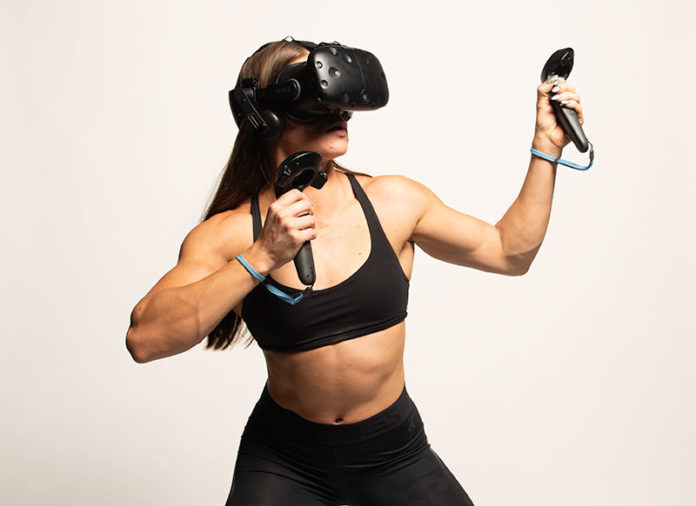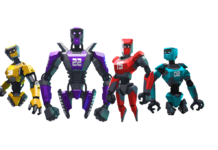Frag your way to a better body, and make some new friends doing it.
You’re turning the corner, completely unsure of what’s waiting for you. Weapon in hand, eyes locked on the horizon, heart thumping in anticipation. This is the telltale adrenaline rush of the first-person shooter, as it has been experienced across generations since the late 1990’s.
A genre best known (more recently) for entries in the Call of Duty, Halo and Battlefield franchises—among more competitive titles like Overwatch and Counter-Strike: Global Offensive—you might not associate classically seat-locked or couch-locked FPS games with fitness and exercise.
You might also be unfamiliar with VR and, since there is no such thing as a Call of Duty or a Halo in VR yet, you’re unsure what’s what. After all, it’s a brand new industry with a brand new set of industry players.
Last August, I talked about how VR FPS games can provide a nice LISS workout with a few additional tweaks. I stand by what I said then, and today I’m going to dig into my top five favorite multiplayer VR first-person shooters.
Onward (SteamVR, Oculus Rift)
At the top of my list is Onward. Now, I have to admit something before I continue. I’ve slammed 134 hours of my life into Onward. I attended the Onward Grand Finals at Oculus Connect 5 and cheered for my favorite team (that is, Globochem) for four consecutive hours in a tiny little seat. Not only did I do this; I dragged my friend along with me, who is now reportedly building up her own Onward league team as a result.
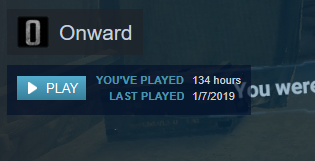
Am I an Onward fanboy? Am I just a little bit biased? Absolutely on both counts. But here’s why you need to at least buy, download and try Onward: It’s friggin’ intense, man.
Onward is built solely to give you the most immersive, downright terrifying squad-based live combat simulation that you can experience in a home VR headset. It’s not meant to be fun. It’s not meant to spark joy. It is meant to feel like the developers at Downpour Interactive stuck you into a pressure cooker and instructed you specifically not to die.
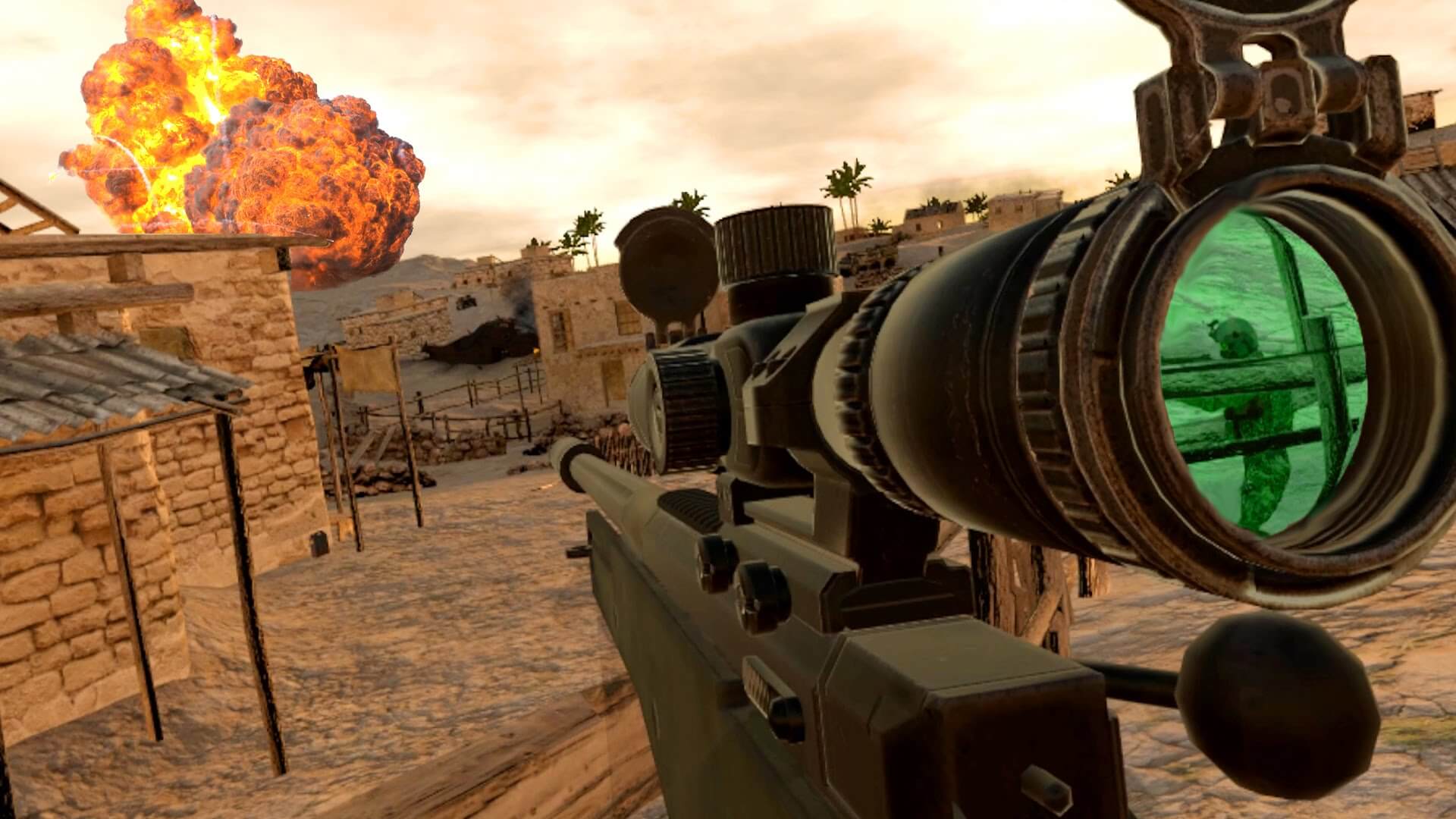
If you’re playing with a pickup squad and you don’t work well together, tough luck. Everything in this game’s design, from the player-unfriendly locomotion and limited-context inventory mechanics, to the open-ended (and often dark) maps, to the fact that you can’t make out distant objects 80% of the time because your HMD just can’t draw enough pixels, is targeted at getting you and your squadmates real close with one another.
You are each other’s lifeline. You are the only thing holding one another back from the threat of some expert players on the opposite team picking each of you off before you have a chance to scream “Contact left!” into your HMD microphone while your concerned neighbors dial 911.
When you’re downed, you can be revived by another member of your squad. But once you’re dead, you’re dead for the remainder of the match. Don’t worry though; after the round is over, when all is said and done, you’ll all be laughing and/or crying with one another. Friendships and inside jokes are forged very often here. In fact, Onward is special because of its intentional focus on tension and intimacy.
As far as the suite of multiplayer gameplay modes available, you’ll find yourself broadly playing Uplink, Spec Ops, and Escort modes across 10-ish maps. There are a few more modes, including a shooting range and some PVE categories for up to four players vs. bots, but the ones listed above are where you’ll most commonly find people playing in servers together.
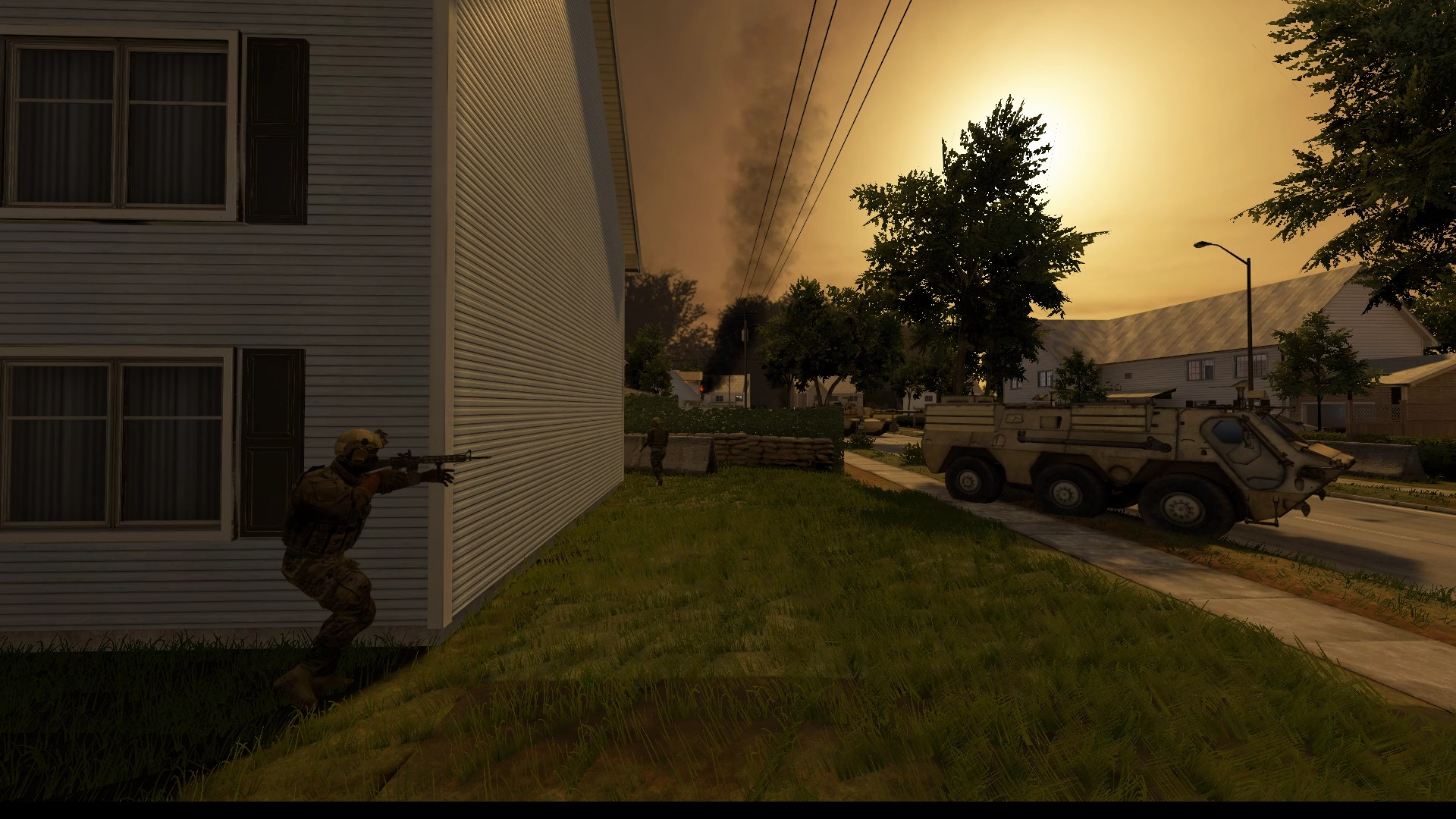
Uplink has the Attacking team trying to punch a 7-digit code into an objective point or killing all members of the Defending team before the clock runs out. Escort sees a convoy of defenders escorting a single VIP player to a specific point on the map while the opposite team tries to kill the VIP. Meanwhile, Spec Ops is a bit different, with both teams directly tasked with killing one another in entirety, but where one team (MARSOC) is armed with pistols and flashlights while the opposite (Volk) is limited to knives and night vision.
This is the hardcore, dark chocolate VR FPS. Of the bunch, it’s the one that’ll make your hands sweat and your heart palpitate. It will challenge everything you know about your ability to hunt, fight, and collaborate in a team as you crawl across your living room floor to jam your knife into that pesky sniper’s backside as the clock ticks down to 30 seconds.
If that’s your style, you’ll find lots to love here. And even if it isn’t your style, you owe yourself a few rounds to see what this one-of-a-kind experience is all about.
Edit: Due to the 1.5 update on January 31, much of the classic Onward game modes have been largely cordoned to Core – Competitive matchmaking. Onward now hosts a full suite of casual modes including Gun Game and Uplink Assault, a version of Uplink with respawn tickets for both teams.
Pavlov (SteamVR)
Pavlov is one of my other guilty joys (at about 95 hours clocked). It’s cheaper, cheesier, and made with fewer resources than Onward. You can think of Pavlov as Onward’s less edgy, more fun to hang out with cousin. It’s marked by much brighter graphics and quicker-paced gameplay, including a custom map hook that’s fostered a really cool modding community via Steam Workshop.
In defiance of Onward’s “all tense, all the time” approach to VR multiplayer shooting, Pavlov revels in a mischievously cartoony run-and-gun flavor of brutality. The TTK (time-to-kill) in Pavlov is significantly higher, making gunplay more about pumping the most bullets into your opponent rather than tactical timing and targeting. Where Pavlov actually finds its identity, however, is with PCVR players as somewhat of a Garry’s Mod spinoff; there are always new maps to try out, and you can simply immerse yourself into the mayhem rather than hold back for fear of your virtual life.
The availability of industry-standard Gun Game and Team Deathmatch modes leads to more intense, impassioned standoffs in maps like Bridge and CS_Office. You get more playtime in per round and, as a result, you develop more of a consistent rhythm with Pavlov’s gameplay beats. It might not be as existential as Onward, but you’ll certainly burn a few calories.
Firewall: Zero Hour (PSVR)
Firewall: Zero Hour is a different beast from any of the others mentioned here. It’s a PSVR exclusive, it comes from a well-funded team of game industry pros over at First Contact Entertainment, and it leans on traditional Call of Duty style character progression.
As you play Firewall, you earn XP and fictional cryptocurrency that you use to level up and buy new gear, aesthetics, and playable contractors—characters that each come with their own unique perks.
Like Onward, Firewall is all about keeping your squad alive while you push or defend a specific objective. It runs on a strict rotation of maps and only has one mode. Unlike Onward, you do not have two hands to play around with. Instead, your entire interface is projected onto the weapon you’re holding.
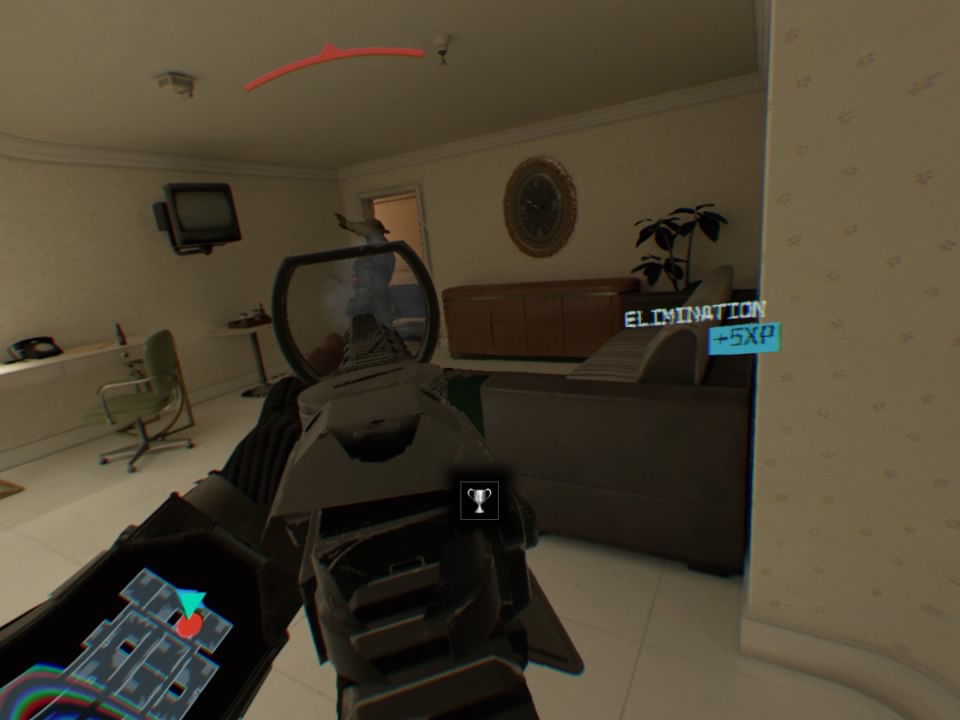
Button presses command many of the interactions you have with the environment, but the core aiming and shooting is very, very familiar for those experienced in other VR shooters. It’s refreshingly convenient to be able to press a button and reload your weapon or access a terminal, however it does take away some of the immersion.
You can play Firewall with either a PlayStation Aim Controller or a DualShock 4—but let’s be honest, it was made for the Aim Controller. Challenge yourself by ducking in real life instead of pressing the circle button.
Echo Combat (Oculus Rift)
Echo Combat is the de facto sci-fi VR FPS of this list, and it’s the only one that relies on zero-G to do most of its dirty work. While locked to three unique 4v4 maps and only a handful of toys to play with, it’s hard to describe the elation you feel in Echo Combat when you first turn off the game’s comfort options and let yourself do barrel rolls in total freedom. And again, while comfort options do exist, they feel more like shackles than actual “comfort” options. Echo Combat is simply not a game I’d recommend to anybody who deals with motion sickness.
But if you can handle slight vertigo and other physiological effects that signal complete immersion in Echo Combat’s beautifully abstracted cyberscape, you’re in for one hell of a joyride. As you propel yourself around, behind, and on top of enemy players, you’ll feel a sort of timeless or childlike joy. Launching yourself across a corridor, climbing up somebody’s back and blasting them to dust at point-blank range is so weirdly satisfying. There really is nothing else like it in the entire world.
Is Echo Combat a reason to buy an Oculus Rift over an HTC Vive? Probably not. But if you have a Rift, there is no other exclusive as cool as Echo Combat.
Contractors (SteamVR)
Contractors is doing a lot of cool stuff. It’s taken the objective-based gameplay of Firewall: Zero Hour and it’s streamlined it for a more casual audience. You can respawn mid-match, you’re not locked to a progression system (meaning you get to play with all weapons and gear options from the start, of which there are tons) and you have both hands available to you.
It is also a much prettier game than any of the others on this list besides maybe Echo Combat, with highly detailed environments and full IK (inverse kinematic) body rendering, meaning you look down and you see your arms, legs, and everything else.
The aiming and shooting here are superb; weapons feel more punchy and realistic than in the other games, and the sound effects are some of the most realistic in a VR FPS next to Onward. The muzzle flashes also stand out amongst the herd.
A big problem that I see with Contractors which puts it down at the bottom of my top five list is the lack of direction for what the game is trying to be. The pacing of Contractors is too lax for the game to not include a hook for custom maps. Its primary Control mode attempts to constrain you to objectives without giving you enough tension or team balance to provide a competitive challenge. It has a great foundation, but I think it suffers from an early-access identity crisis.
At least you can (physically) duck while sprinting to initiate a powerslide, which is awesome.
VR FPS games are a good way to get a low-intensity workout in. Multiplayer VR shooters have a lot of replayability packed into them, so it’s easy for me to recommend a few of my top favorites. Add on a weighted vest and some wrist weights and you’ll see a nice calorie burn at the end of your binge session.
What VR FPS do you spend too much time in? Let us know in the comments.

